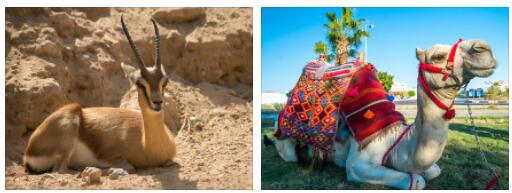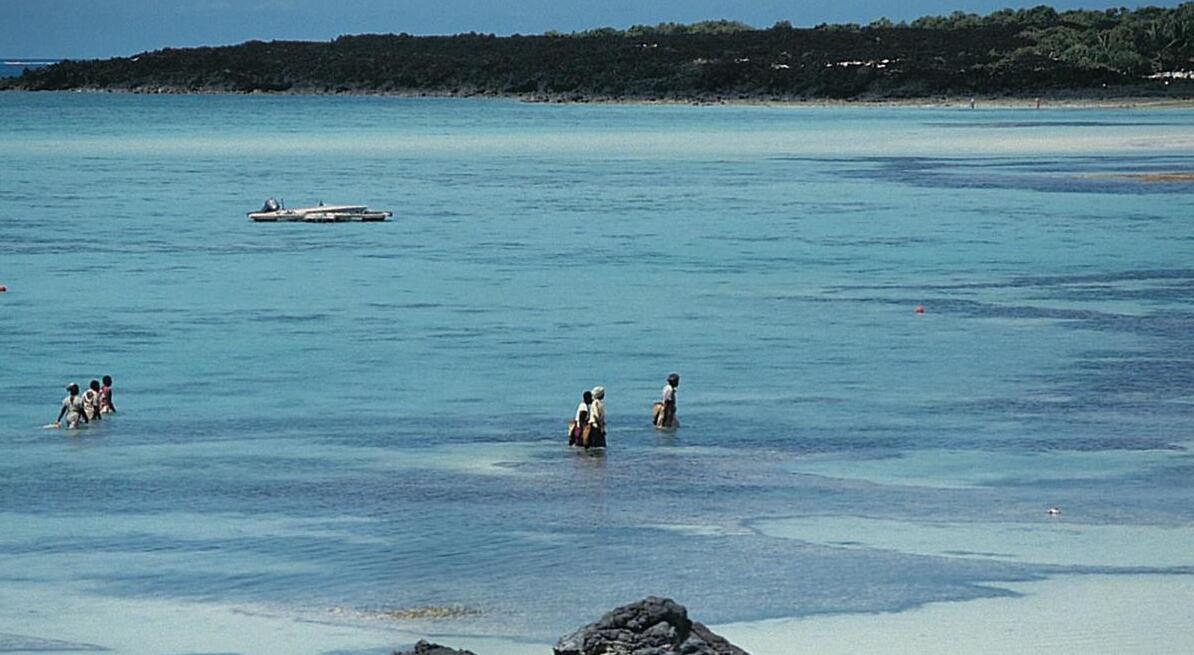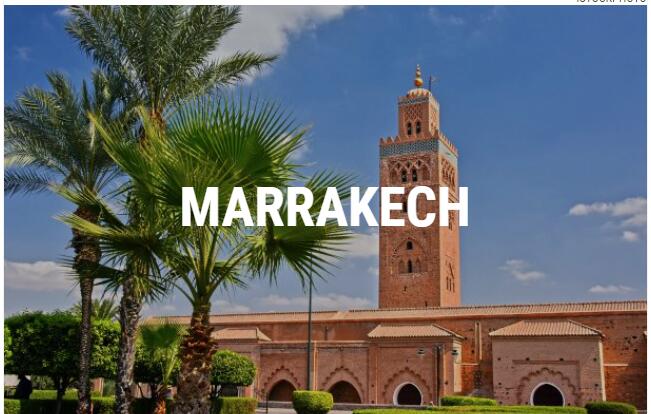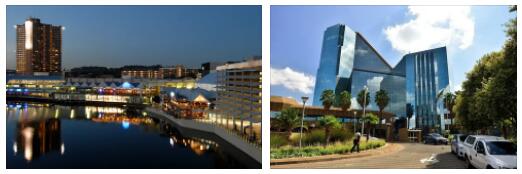Egypt Wildlife and Economy
Animals and Plants
Undemanding plants
It rains little in Egypt. Much of the country is desert. Almost only thorn bushes grow here, or occasionally a tamarisk or acacia.
It looks very different on the banks of the Nile. Date palms, carob trees and sycamore figs grow here. These trees can survive because they have very deep roots. In the delta of the Nile – in the far north of Egypt – even bamboo plants and lotus plums sprout.
Flowers in Egypt?
The country is characterized on the one hand by great drought and desert, on the other hand by great fertility on the banks of the Nile and especially in the Nile delta. Beautiful flowers such as lotus, roses and jasmine also bloom there in Egypt.
In ancient Egypt, the papyrus tree had an important meaning. It no longer grows as often as it did during the time of the Egyptian pharaohs and is almost only found in the southern part of Egypt.
The wildlife of Egypt
The Nile crocodile was almost extinct, now it lives again on the Nile. It looks quite cozy, but it shouldn’t be annoyed.
Winter vacation for birds
Since Egypt is crossed by the Nile, there are a lot of water birds living there, especially in the north of Egypt in the Nile delta. Egyptian geese, but also herons and cranes, which also live here, populate the banks of the Nile. In addition, there are many species of birds for which it simply gets too cold here in Europe in winter. They then fly to Africa to spend the winter there. But there are also birds of prey such as kites.
Who Still Lives in Egypt?
Donkeys, sheep, camels and goats are very important pets.
But wild animals such as jackals, hyenas and wild cats also live in Egypt. And of course all the animals that prefer the desert like scorpions or lizards. And don’t forget the many fish that frolic in the Red Sea.
And where is the crocodile from the Nile?
When you think of the Nile and Egypt, the first thing that comes to mind is the famous Nile crocodile. Incidentally, this was almost gone and eradicated. The crocodile was hunted until the 80s of the last century. You wanted to get into your skin, because you made leather from it and in the end you made handbags from crocodile skin.
In the meantime, the populations have recovered and the Nile crocodile has recaptured its habitat. It’s not so endangered now. Incidentally, it lives in large parts of Africa south of the Sahara. In Egypt it occurs only in the southeast on the upper reaches of the Nile.
Economy
Agriculture in the desert – is that possible?
Egypt consists for the most part of a dry desert landscape. The lack of water makes it impossible for people to grow anything there. Agriculture in Egypt is therefore only possible in oases and on the Nile. On the Nile between Cairo and Aswan, there are fields to the right and left of the river – as far as you can irrigate the land here. It looks a little better in the more humid Nile Delta in the north of the country, where the Nile fans out into several arms.
The source of life in Egypt is therefore the Nile, without which there would be hardly any agriculture. The Egyptians grow crops and keep cattle on the Nile. This has been the case for thousands of years.
But by building the Aswan Dam the floods receded and the Nile mud could no longer run off. Now the farmers are fertilizing artificially, which again affects the quality of the Nile water. This is made worse by the artificial fertilizer.
What is grown in Egypt?
Cotton is grown mainly in the north, sugar cane in the south. Sugar cane is processed further in factories along the Nile. The Egyptians also grow bananas, corn, rice, wheat, millet, potatoes, barley and onions, as well as citrus fruits, dates, figs, mangoes and melons. They export these fruits to other countries.
About every third person in Egypt makes a living from agriculture and animal husbandry. Egyptian farmers keep buffalo, cattle, goats, donkeys, chickens and sheep, which on the one hand provide milk and meat, but are also used as pack animals when the technical equipment is missing. The nomads also live from cattle breeding.
Egypt’s mineral resources
The most important natural resources in Egypt are oil and natural gas. The Egyptians export crude oil to other countries and they use natural gas to a large extent themselves. This is how energy is recovered from natural gas. Compared to Saudi Arabia, however, the amount of oil produced in Egypt is only ten percent.
The Egyptians also mine iron ore, which is of great importance for the Egyptian economy. Iron ore is stored in the Aswan area and, above all, at an oasis called Bahariyya. Manganese ores are also one of Egypt’s mineral resources and are found mainly on the Sinai peninsula.
Tin and chrome have been discovered mainly along the Red Sea coast. The Egyptians also mine phosphate and gypsum in the Red Sea and in the south of the Sinai Peninsula. Uranium ore is also mined in Egypt.
More and more food
The Egyptians need the money from their exports, both of mineral resources and agricultural products, in order to be able to buy food again that they cannot produce themselves. And as the population continues to grow, it needs to be fed and more and more food is needed.
Tourism in Egypt
Besides agriculture, tourism is the second largest industry in Egypt. The tourists like to visit the sandy beaches of the Red Sea, where you can dive and experience a fascinating water world. Centers like Hurghada and Sharm El Sheikh attract many tourists. The ancient cultural sites of Egypt are also popular, especially the Pyramids of Giza, the Valley of the Kings and the Karnak Temple.
Due to the attacks against tourists, this important industry is shrinking in Egypt. Many people have lost their jobs and thus their livelihoods. But tourists quickly forget, they usually come back until there is another attack. Of course, this does not only apply to Egypt. But such countries are hit particularly hard because many people live from tourism.



